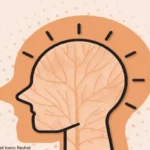
In recent years, anxiety has gone from being a clinical problem to becoming an everyday word. Social media, casual conversations, wellness articles… they all mention it, generating a capillarity that didn’t exist before. And that, in many ways, is positive: talking about anxiety without taboos has allowed more people to seek help and better understand their symptoms.
But this huge visibility also has a side effect: it blurs the boundaries between what is anxiety and what is not. By normalising the term, we risk trivialising it or, worse still, confusing natural emotional states with a mental health problem that requires specialised care. How do you differentiate between a normal reaction and a sign of something deeper? What does it feel like when you have anxiety?
Learning to draw that line between temporary discomfort and anxiety disorder is essential to addressing the problem appropriately.
Anxiety is not your enemy, as long as it is not excessive
Anxiety is a normal reaction to different situations, especially those that overwhelm us emotionally. These “nerves” are a kind of “internal alert system” that warns us of a danger or threat – real or imagined – and prepares us to respond.
In fact, experiencing a manageable level of anxiety can be helpful from time to time. For example, it can give us an extra dose of energy to prepare for an exam or finish a work project on time. Even happy events, such as moving into a newly purchased home or celebrating a major life milestone, can trigger some anxiety because they involve a dose of uncertainty.
Anxiety, in the right amount, triggers a series of neuropsychological changes that can work in our favor. It releases adrenaline and cortisol, preparing us to respond more quickly and accurately. The body mobilizes extra energy, attention sharpens, and memory improves, as researchers at the University of Waterloo have found . Essentially, it is a mechanism designed to help us perform better in situations that require focus and immediate reaction.
A moderate level of anxiety also improves decision-making under pressure and enhances learning, since when the brain perceives a situation as challenging, it prioritizes the consolidation of relevant information and pays more attention to details. The problem is not feeling anxiety, but that this state accompanies us everywhere, becoming overwhelming and paralyzing. It then depletes our resources and affects our well-being. For this reason, it is essential to distinguish between functional and pathological anxiety.
What does it feel like when you have pathological anxiety? The symptoms that raise the alarm
First of all, it is important to know that there are different types of anxiety disorders, from phobias to generalized anxiety, the most common. Although their symptoms vary, some common signs that differentiate pathological anxiety from simply “feeling anxious” are:
- You experience a feeling of anxiety that is overwhelming and disproportionate to the situation you find yourself in, to the point that it interferes with your daily life.
- Anxiety accompanies you everywhere and is present practically throughout the day, so it is not an occasional situation.
- You have a constant feeling of apprehension and anxiety , as if something negative is about to happen at any moment.
- You worry about a thousand different things, many of them completely inconsequential, but which in your mind take on colossal proportions.
- You have trouble concentrating because your mind is trapped in a loop of constant worries, which ends up affecting your performance.
- You experience an uncomfortable feeling of lack of control because anxiety dominates your thoughts and emotions, generating a feeling of helplessness and impotence.
- You have intense physical symptoms, which can range from muscle tension and dizziness to tachycardia, difficulty breathing, tingling, digestive problems and insomnia.
In short, the key difference between anxiety and an anxiety disorder is the severity and persistence of the symptoms. If you’re about to go on a first date or give a public speech, it’s normal to feel a little nervous. But if you’re still experiencing anxiety after the situation is over, to the point that it affects your well-being and prevents you from leading a normal life, you’re probably dealing with a full-blown disorder.
Why ask for help and when should you do it?
Anxiety can become an unwelcome guest. When it arrives, it is meant to stay and tends to get stronger over time. The problem is that the brain, in its attempt to protect us, learns to respond with fear and becomes overactive in an increasing number of situations, even when there is no real danger. Thus, what was initially a one-off reaction to stress can, over time, become an automatic pattern, a way of interpreting and reacting to the world.
This process has a neurobiological basis. The amygdala, the region of the brain responsible for detecting threats, becomes more reactive with each episode of intense anxiety. At the same time, the prefrontal cortex, responsible for rational decision-making, loses control over the emotional response. In other words, a full-blown emotional hijacking occurs.
So, contrary to popular belief, ignoring anxiety or “waiting it out” is not always the best solution . The longer we let anxiety take over without intervening, the more the neural circuit that feeds it will be strengthened and the more resilient it will become.
There is no need to wait for a clinical diagnosis to start taking action. Making some lifestyle adjustments, such as doing physical activity regularly, learning to disconnect, applying relaxation or cognitive restructuring techniques will help our brain to “pull the handbrake” so that anxiety does not take off.
The right time to act is not when anxiety has already become a serious problem. It is before. Just when you begin to notice that anguish, fear and worry are gaining too much ground in your life. At that moment you have more room to maneuver and it will be easier to regain emotional balance.
Remember that anxiety can be overwhelming, but it doesn’t have to be permanent.
References:
Lee, C. & Fernandes, M. (2017) Emotional Encoding Context Leads to Memory Bias in Individuals with High Anxiety. Brain Sciences; 8(2): 6.
Zhang, L. et. Al. (2015) Trait Anxiety Has Effect on Decision Making under Ambiguity but Not Decision Making under Risk. PLoS ONE 10(5): e0127189.
Kim, J. & Gorman, J. (2005) The psychobiology of anxiety. Clinical Neuroscience Research; 4(5-6): 335-347.




Leave a Reply